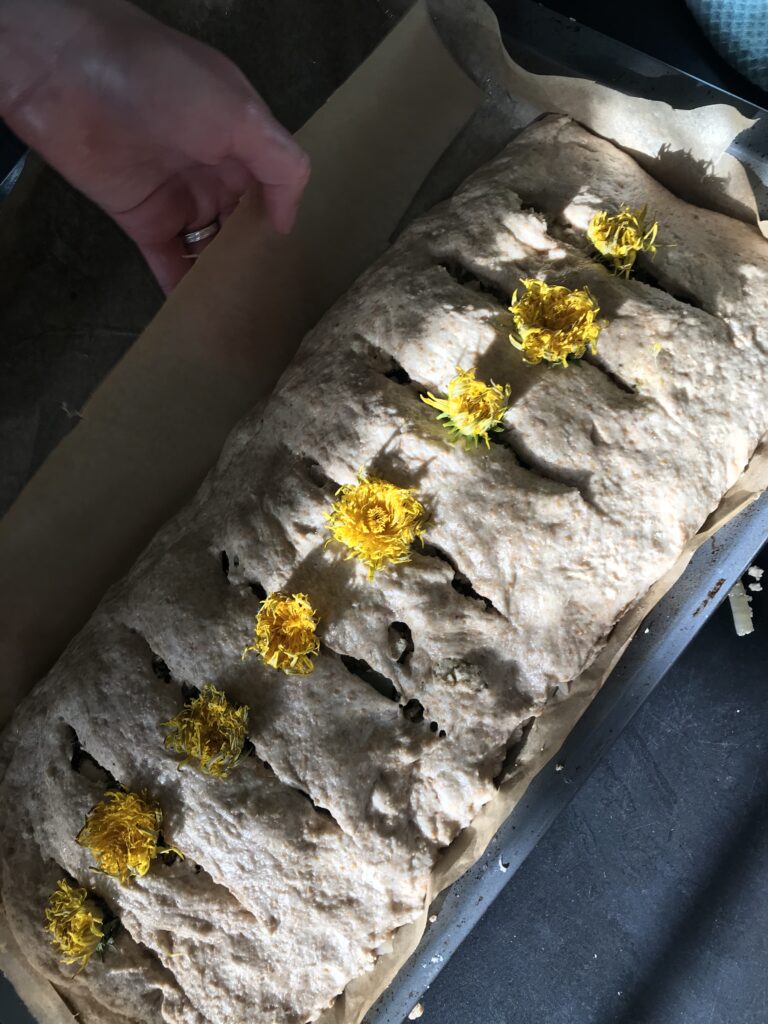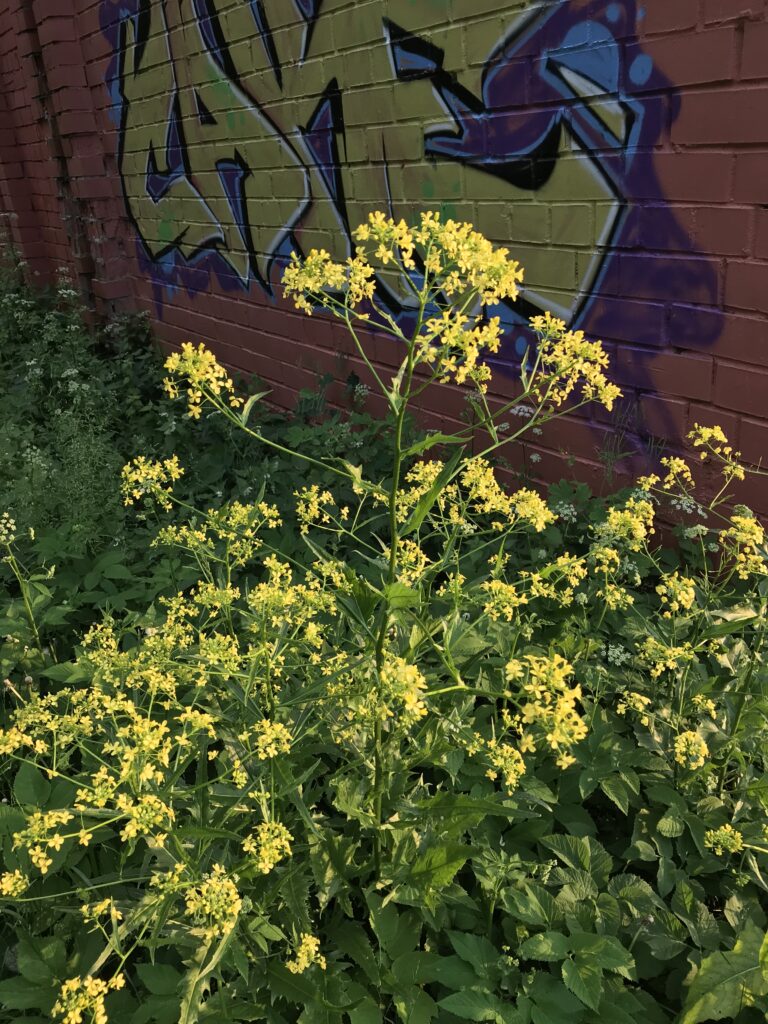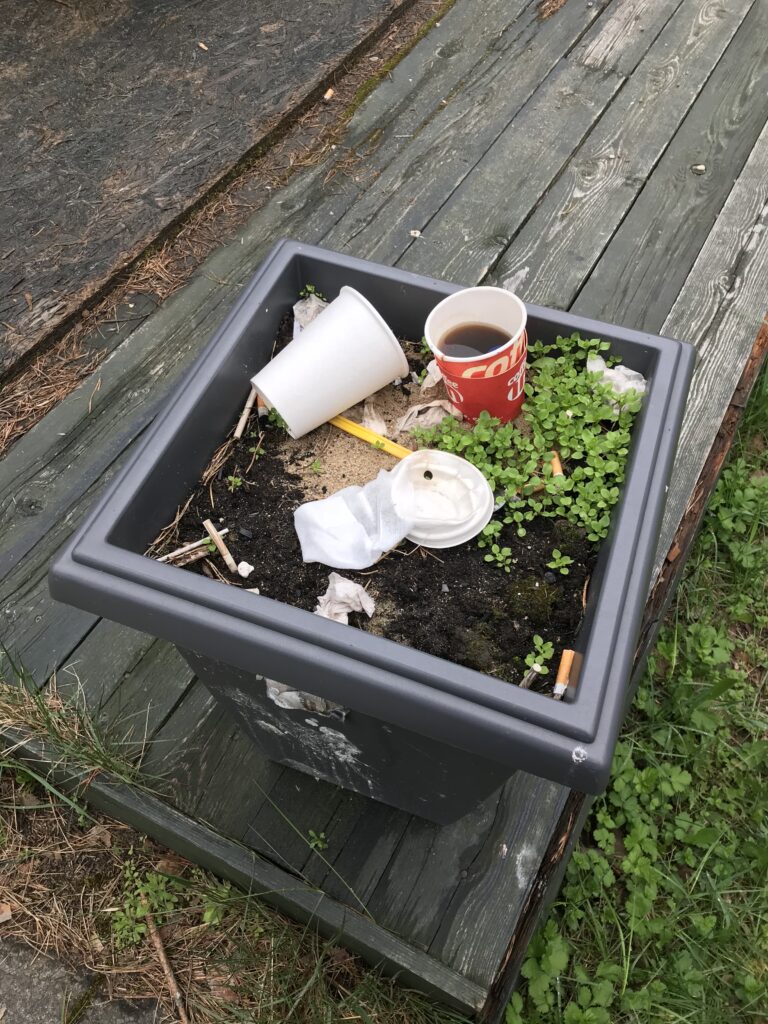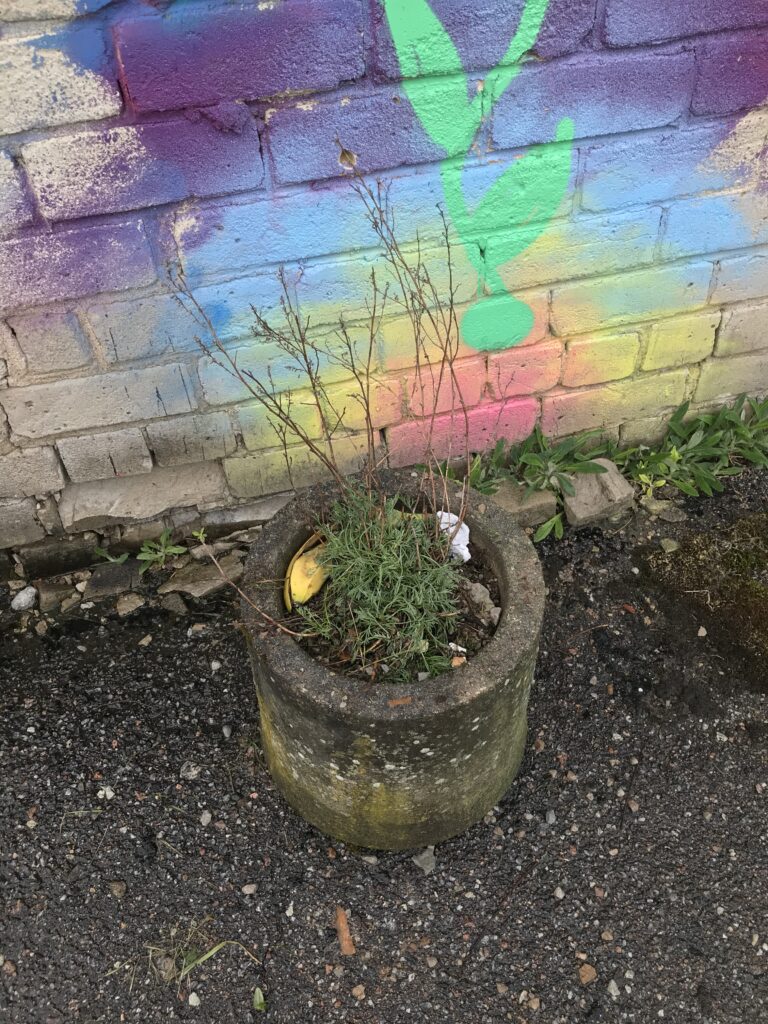A weed is a plant considered unwanted in human-controlled settings, such as farm fields, gardens, lawns, and parks. The derogatory term ‘weed’ is also applied to any plant that grows or reproduces aggressively or is invasive outside its native habitat. Invasive species are largely a consequence of human activity: plants and seeds brought by people on purpose or by accident to an area, where they might not have natural competitors and thus will grow unstoppably. The most common weeds in European, North American, and Australian cities are virtually identical. In fact, most international weeds were originally of European origin, which is an effect of colonialism.
Often ‘weeds’ have escaped from gardens, where they were once cultivated as edible, medicinal, decorative or otherwise useful plants. Many plants known as weeds stabilise soil, curb water loss, provide shelter for other plants, and food for insects and animals—they repair a disturbed land.
They move in to replace more sensitive plants that we have endangered. Their willingness to grow in the most hostile environments—a bombed city, a crack in a wall—means that they insinuate the idea of wild nature into places otherwise quite shorn of it. […] Although they follow and are dependent on human activities, their cussedness and refusal to play by our rules makes them subversive, and the very essence of wildness. […] Many of them may be holding the bruised parts of the planet from falling apart.’1

DANDELION
‘Dandelion is a wonderful food as well as beneficial medicine. It supports overall health by gently working to improve the functioning of the liver, gallbladder, and urinary and digestive systems. It is excellent for cleansing the skin.’
Julie Bruton-Seal & Matthew Seal, Hedgerow Medicine


TURKISH WARTY-CABBAGE aka HILL CABBAGE
One of the most hated weeds in Estonia is Bunis orientalis, which is considered an invasive species. It was brought to Europe by Russian soldiers during the Crimean war (1853–56), who added this weed to their horse feed. Here, it was first noticed in Rakvere, and hence the folk name ‘Carrion from Rakvere’ (Rakvere raibe). According to a decree issued in 1939, the plant should be destroyed if encountered.
Turkish warty-cabbage is not only useful for animals and livestock, it is also a valuable source of nutrition and medicine for humans. A blooming warty cabbage is attractive for bees.


CHICKWEED
‘Chickweed contains saponins. Saponin means ‘soap-like’. If you take a handful of the plant and rub it in your hands with a little water, you might not actually get a lather, but you will feel the soapiness and it will leave your hands feeling lovely and soft […].’
Julie Bruton-Seal & Matthew Seal, Hedgerow Medicine

BISHOP’S WEED
‘Bishop’s weed, or gout wort, has long been used as a natural food source in Central Europe and Russia. In the medieval times, bishop’s weed was grown in monastic gardens after which it also reached the Nordic countries. Bishop’s weed has been cultivated as a vegetable in Sweden.’ Sinikka Piippo, ‘Food from Nature’


MUGWORT
‘It is an ancient herb of healing, magic and divination throughout the world, a protector of women and travellers, renowned for its value in feminine disorders, and as a strong warming tonic. Mugwort was used in making ale in Europe before hops.’
Julie Bruton-Seal & Matthew Seal, Hedgerow Medicine

Part of the installation ‘Sore’ for the group show ‘Living in Decline’ (17.06.–03.10.2021, Estonian Mining Museum).
Workshop ‘OBSCHENIE’, (Re)Configuring Territories spring school, supervisors: Maria Muuk, Sandra Kosorotova, Sille Kima. Narva, 2021.

SANDRA KOSOROTOVA is an artist and designer. Currently she is co-running an open garden near Narva Art Residency with artist Sille Kima.
HEADER photo by Sandra Kosorotova, graphics by Margus Tammik
PUBLISHED: Maja 105 (summer 2021) with main topic Landscape Architecture!
1 Richard Mabey, “Weeds”





